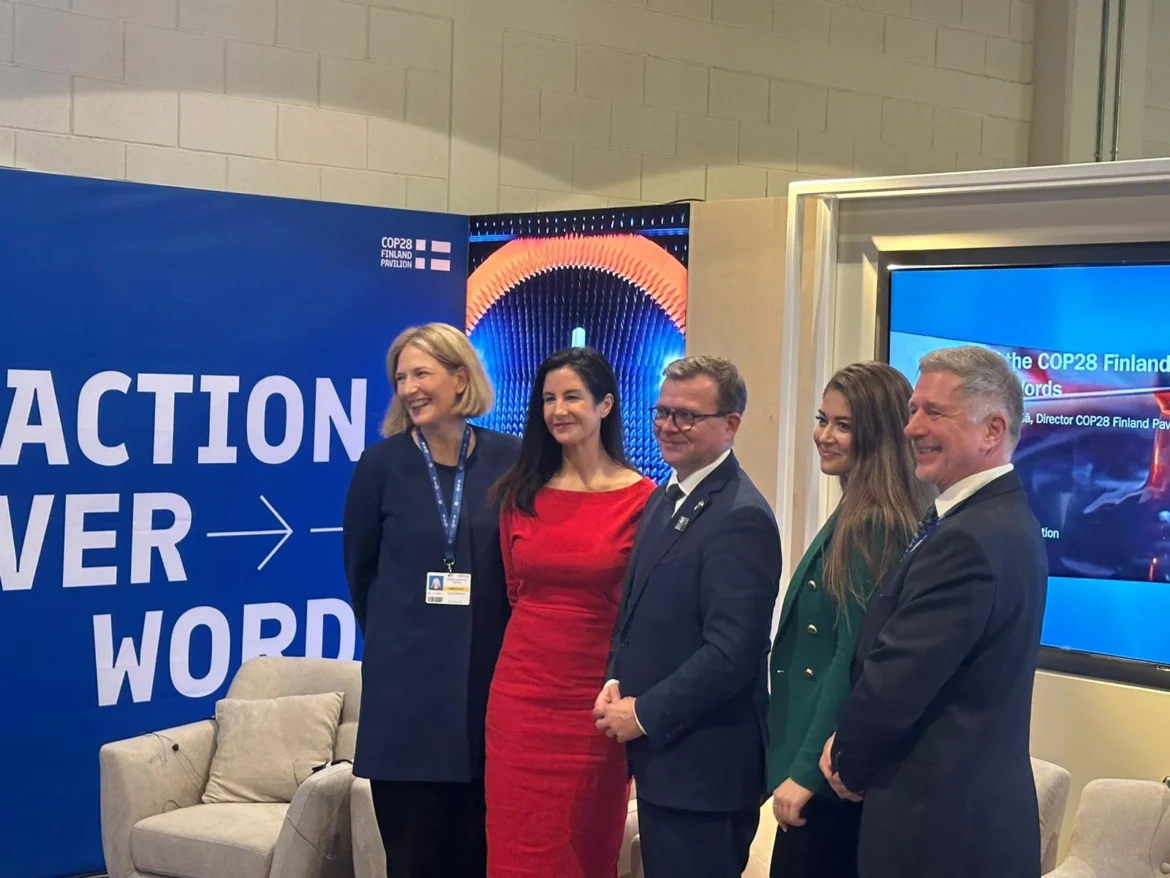The Finland Pavilion kicked off today as the country’s first-ever national Pavilion at a UN climate conference. A public-private partnership, it brings together efforts from corporations, companies, universities and cities.
Opening with remarks from Tuuli Kaskinen, CEO, Climate Leadership Coalition, who highlighted Finland’s climate achievements so far, the Pavilion is aimed at showcasing the country’s offerings as a green hub.
Kaskinen noted that Finland has set “one of the most ambitious climate targets in the world,” to achieve carbon neutrality by 2035 and highlighted that Finland is already producing 95% of its electricity with renewable and clean energy sources “without carbon emissions,” and planning to double production by 2035.
According to Kaskinen, with its renewable energy plans, including green hydrogen, Finland will become “a haven” for clean and green industries.
However, Kaskinen noted that while the Pavilion is focusing on the business community, governments need to ensure that the playing field enables investments and industrial transformation.
Finnish Prime Minister Petteri Orpo then took to the stage and expressed both his and his government’s commitment to “fight against climate change.” Outlining: “This time is pressing and we need action.”
Further, as has been echoed across the last two days, Orpo said that achieving climate targets requires “efficient collaboration between the public and private sectors,” and shared the government’s commitment to allocate 4% of GDP to research and innovation by 2030.
He also highlighted the work of the Finance Ministers for Climate Action, launched in 2019, and said that it “stands as a token of how a small country can bring about significant global changes through cooperation.”
At the launch, Nokia was one of the twenty plus partners at the Pavilion and represented by Melissa Schoeb, Nokia’s Chief Corporate Affairs Officer. Again, highlighting the role of collaboration in the transition, she said: “We recognise the unique impact that comes from teaming up and working together with like-minded organisations, regardless of the sector, to support shared goals.” Indeed, Schoeb shared that Nokia is working with Neste on SAF in its supply chain.
Further, she outlined that Nokia’s participation is forged on the belief that “there is no green without digital.”
Also at the event was Vice President of Sustainability at Outokumpu Heidi Peltonen, who emphasised the role of the business sector in turning policies into “concrete actions.”
Peltonen highlighted that the steel industry is responsible for between 7 per cent and 9 per cent of global greenhouse gas emissions, and said the transition will “never happen without sustainable stainless steel.”
Speaking to ESG Mena, Peltonen outlined that the company currently has the lowest carbon footprint in the industry, 75 per cent lower than industry peers globally.
This, she explained, is achieved through utilising over 90 per cent recycled materials.
“We have set the highest ambition in the stainless steel industry to reduce our emissions by 42 per cent, across our value chain,” she said, adding: “and from that 42 per cent reduction, we are now halfway at 20 per cent reduced.”
When asked about the biggest barriers that need to be overcome to achieve decarbonisation goals, Peltonen said scaling technologies, funding the transition, increasing demand for sustainable stainless steel, and getting investors incentives from the governmental level are all factors at play.



